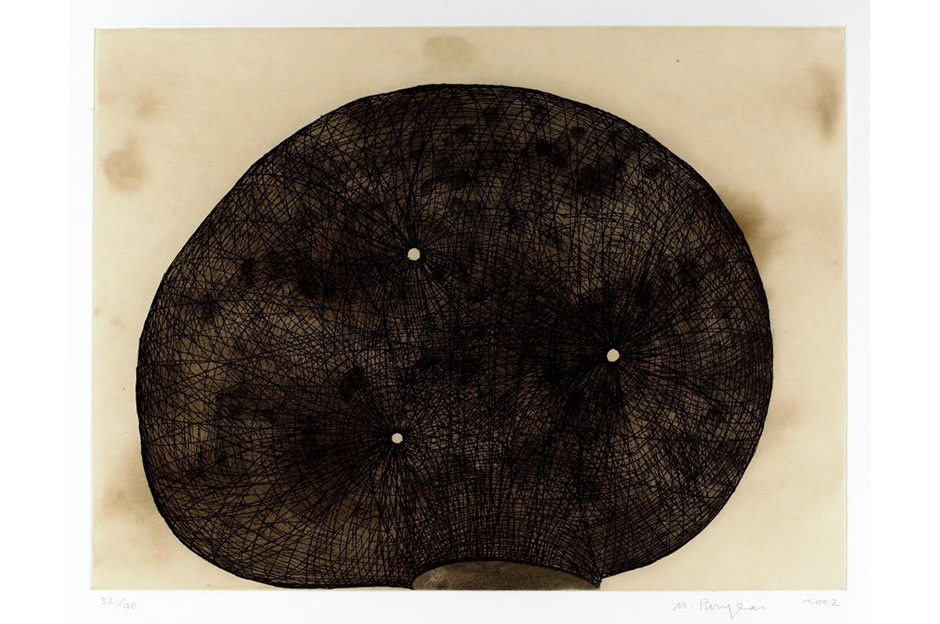Works from the Museum of Art permanent collection are on view the month of March in Sculpture: In Pairs and On Paper, in gallery 1 West. The sculptures are shown in pairs so visitors can examine them individually and in comparison, and the works on paper all made by sculptors are installed to complement the three-dimensional pieces.
Surge by John von Bergen has an open pattern of ribs that looks like a natural shelter into which someone or some animal might enter. John Montis' untitled sculpture is all closed form and, because it's all-black, seems mysterious. Monti wrote that he wanted his work to be imbued with veiled associations which are based more in our memory.
Created more than one hundred years apart are two little hands, by Marion Wilson and Auguste Rodin. Rodin's work is fully three-dimensional and is a study of human anatomy, a helpful exercise for an artist who made figurative pieces. Wilsons is a relief of a baby's hand and looks something like a school art project, but its meaning becomes more sinister when seen in comparison to her monoprints of handguns from the series Forbidden Play.
Another Rodin, Kneeling Faun, is displayed with Woman Combing Her Hair, by Hugo Robus. Rodin's kneeling female figure looks naturalistic; the sculpture was modeled and cast in bronze so that the surface would be varied to create a strong contrast between lights and shadows. By comparison, the surface of the Robus is very polished and reflects the artists' interest in the modern world.
Raymond Duchamp-Villon created his magnificent Large Horse during World War I (1914-18), when he was attached to a cavalry regiment. His first studies were naturalistic, but as he continued to work, Duchamp-Villon made the sculpture more abstract. The Large Horse is shown with Joan of Arc by Anna Hyatt Huntington. The Huntington is a more traditional equestrian monument in which the artist captured the animal's powerful presence as well as the young woman's spiritual fervor.
Study in Pure Form by John Storrs combines different metals and, as in the Hugo Robus Woman, the materials are highly polished for a sleek, modernistic effect. Risa Sussman's untitled sculpture, by comparison, has a cluster of upright pieces that may or may not be about architecture. To some viewers, the work may look more like a crowd of figures. Sussman used found materials and left them fairly unfinished which is quite different from Storrs's treatment of his metals.
Ann Messner includes some recognizable features, such as a hot plate, in her mobile home, but leaves other elements of the sculpture less specific, enabling the viewer to speculate on the myriad meaning of home. Alternately, the little dollhouse by Yinka Shonibare replicates the artist's 19th-century London townhouse, complete with furnishings.
Sculpture: In Pairs and On Paper also features drawings and graphic arts by Petah Coyne, Chris Duncan, Seymour Lipton, Sharon Louden, John Monti, Martin Puryear, and Athena Tacha



